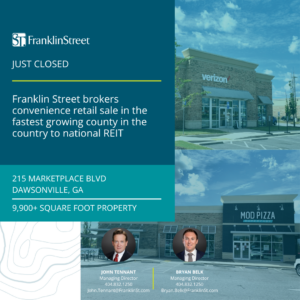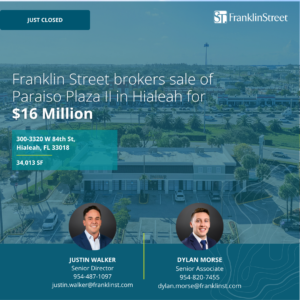It was Oct. 15, 2014, and Mike Kavanau was trying to lock up his latest apartment deal. His client was seeking permanent acquisition debt financing for a $120 million, Class A luxury tower in downtown Chicago.
Then, the bottom of the market dropped out.
In the span of just 10 minutes, the yield on a 10-year Treasury notes fell dramatically, plunging nearly 35 basis points from the open, the biggest drop in the market in five years. The even would eventually become known as the Treasury Bond “flash crash” of 2014.
Just minutes later, Kavanau, senior managing director at multifamily finance brokerage HFF, went to pull the trigger.
But with the debt markets going berserk, his options were quickly drying up. Some of the 22 primary bond dealers who trade directly with the U.S. Treasury started shutting down their machines. They were trying to avoid being forced into losing trades when their computers automatically generated quotes to customers. That tamped down liquidity in the bond markets, and the tightening quickly rippled to other areas of the debt market, including lenders of multifamily loans.
Suddenly, life insurance companies, which typically win the highest-quality deals, had disappeared. Same with many of the banks and private lenders with whom the life companies compete. Even conduit lenders, the purveyors of commercial mortgage-backed securities (CMBSs), were gone. That morning, it seemed as if everyone was retreating to the sidelines, wary of trying to catch a falling knife.
Everyone, that is, except the government-sponsored enterprises (GSEs), Fannie MAe and Freddie Mac, as well as the Federal Housing Administration (FHA). As Kavanau gazed at his screen, he saw that Freddie Mac was still standing, dealing in the middle of the maelstrom as sub-2 percent Treasury yields blew through the market. On the day when liquidity was slowing to a trickle, the GSEs did what they’re expected to do: They provided liquidity, and Kavanau got his lock.
“We didn’t get it at the bottom, but we got it right after it started on the way back up,” Kavanau says.The result was a 10-year, interest-only loan through Freddie Mac at 100 basis points over Treasury yields, or 3.20 percent. “In my 27-year career here at HFF, if I think about sub-4 percent money, with good leverage and interest-only terms, that’s pretty much lending nirvana.”
And the fact that Kavanau could get those terms through a GSE made all the difference. “Freddie Mac was the only lender that would comfortably lock that rate that day,” Kavanau says. “Most of the life companies were on the sidelines. CMBS completely went to the sidelines. And the banks were concerned. But the agencies -they were in the market, and that allowed us to lock at an exceptional rate.”
Dilettantes of Debt
While the Oct. 15 tale is an extreme example, Kavanau’s win for his client illustrates an enduring facet of the debt market; namely, when it comes to multifamily lending, the agencies are still the debt kings.
“If we’re talking about multifamily capital for apartments, the agencies are extremely competitive,” says Mike May, senior managing director at financing intermediary Cantor Commercial Real Estate. “Even as new entrants have come into the market, they’ve been pretty quick to defend their market position, whether with their fixed-rate or floating-rate product. Particularly over the last year, they’ve done a great job to enhance their products and respond quickly to market forces.”
Multifamily lending hit a record volume of $172.5 billion in 2013, according to the MBA, and that trend only picked up pace last year. Through the third quarter of 2014, year-to-date dollar volume had increased 4 percent for multifamily, with a 41 percent increase, year over year, during the third quarter.
But within that span, the GSEs absolutely killed it. Fannie and Freddie increased their dollar volume of multifamily by 118 percent in the third quarter, year over year. In other words, in a growing market, the GSEs are winning more and more of the dollars being lent.
For debt dealmakers like Kavanau, that increase in GSE dominance just makes sense and will likely continue through 2015. “The significant majority of our business, call it mainstream, permanent, fixed-rate financing on better assets, is going to the agencies,” he says. “They’re still the go-to lender. They’re built to handle those kinds of flows. That’s all they do, so they’re really good at it. I don’t see any reason for them to slow down.”
The bottom line here is that if you’re looking for a lender in 2015, you’ll definitely want to at least talk to the agencies. But keep in mind, depending on what type of deal you’re looking for; how much loan to value (LTV) you want; which markets you’re in; and whether you’ve still got blemishes on your track record from the dark days of 2007 and 2008, your choices abound.
“For borrowers, the current timing and trends could not be better,” says Guy Johnson, vice chairman of capital markets at lender Walker & Dunlop. “With a continuation of low interest rates and increasingly aggressive lending terms, there are a wide variety of options available, including interest-only, leverage, and limiting recourse.”
But while the GSEs offer stiff competition, other lenders are carving out victories on a deal-by-deal basis.
“A lot of times, it’s coming down to which lender is hungriest at at that moment in time,” says Marc Robinson, co-founder of apartment brokerage Multi Housing Advisors (MHA). “Who’s got a monthly quota to fill, ow which producer is going to push the hardest?”
Shahram Siddiqui, a partner at law firm Berger Singerman in Miami, has been seeing multiple offers in his market. “For the best deals, it’s not uncommon to have three or four lenders bidding for the loan,” Siddiqui says. “Sponsors will pick their terms – generally, covenant lite – with the lowest rate possible, and lenders will be as accommodating as they think they need to be to win the loan.” Yet, each area of the market serves varying senarios differently, which might make them stand out in a given situation.
A Debt Deal for Everyone
Walker & Dunlop’s Johnson breaks it down succinctly. Life companies have done a lot of conservative refinances and institutional acquisition financing. “Fannie and Freddie have remained competitive by seeking shorter hold periods with maximum leverage and interest-only terms on large structures,” he says. “CMBS has been popular among leverage-driven borrowers, who want higher cash-on-cash returns and interest-only debt. And banks are seeking recourse guarantees, shorter amortization schedules, and relationship deposits. They tend to focus more on the borrower than the real estate itself.”
CMBS lenders have also been willing to venture into secondary and tertiary markets and are more forgiving if you made a misstep or two in 2007 and 2008. They also offer nonrecourse terms, meaning if your business goes bust, they won’t come after your personal assets. And, as Johnson implies, they stand out in higher-leverage deals.
“CMBS seems to be the most aggressive when it comes to higher LTVs,” says Danny York, president of Franklin Street Capital Advisors. Life insurance companies, on the other hand, will typically get you the best rate on Class A, well-located product, and maybe within 40 basis points of benchmark Treasuries. But their LTV percentages are lower, say 65 percent, so if what you’re really looking for is increased proceeds, you’l need to look elsewhere and pay more.
“Rates at this point are often a function of LTV – the less leverage you’ve got, the lower the rate,” says York.
Terms have an effect too. For instance, you’ll likely pay a quarter point less for a five-year deal than for one that stretches to seven years. Count on a quarter point more at each step if you extend to 10 or 12 years, says Josh Goldfarb, Robinson’s co-founder at MHA.
With all those options, borrowing has gotten easier, especially compared with the clamp-down days of the Great Recession. Eighteen months ago, nonrecourse borrowers were limited to the GSEs and CMBS, says Deme Mekras, a broker at Franklin Street Real Estate.
“But today, you have more options,” he says. “Some balance-sheet lenders have re-emerged with nonrecourse options. Same is true for max proceeds or the highest loan to value available. Some deals even have bridge options pushing 85 percent on loan to cost.”
Underwriting to Near Perfection
Despite those plentiful offerings, debt mavens say the market hasn’t overheated. Few would characterize today’s climate as anywhere near the go-go days of the mid-2000s. “I think it’s important to note that lenders have not checked their underwriting thresholds at the door,” Mekras says. “Aggressive does not equal irresponsible.”
It also means that closing your loan today, while you’ll be courted by a number of debt suitors, isn’t a gimme. You’ve still got to be on your A-game when you go to apply.
“There is substantially more borrower scrutiny now than there was six to seven years ago,” says York. “Lenders want to know they can make a decent return on the investment should they need to foreclose. And tertiary markets are receiving much more scrutiny too.”
Or, as Guy Johnson sees it, “Today, much of the underwriting is done to near perfection.”
That means you want to paint as complete a picture of our deal as possible when seeking your loan. “Make sure you have realistic goals and be up front with the lenders on what [those goals] are,” says Tim Petersen, CFO of Altman Cos., a Boca Raton, Fla.-based owner and manager of 4,800 units. “A fast no is better than a slow maybe that leads to no when all the facts come out.”
If there’s any nagging doubt hanging over the current lending party, it’s gauging how long the party can continue. Most expect 2015 to look much like 2014 – subject to the unknown of interest rates.
“If there were a steep rise in interest rates with rental rate increases lagging, you could see unhedged floating-rate borrowers unable to cover debt service,” says Petersen. “It’s the kind of scenario that makes me sleep like a baby – up every two hours.”



